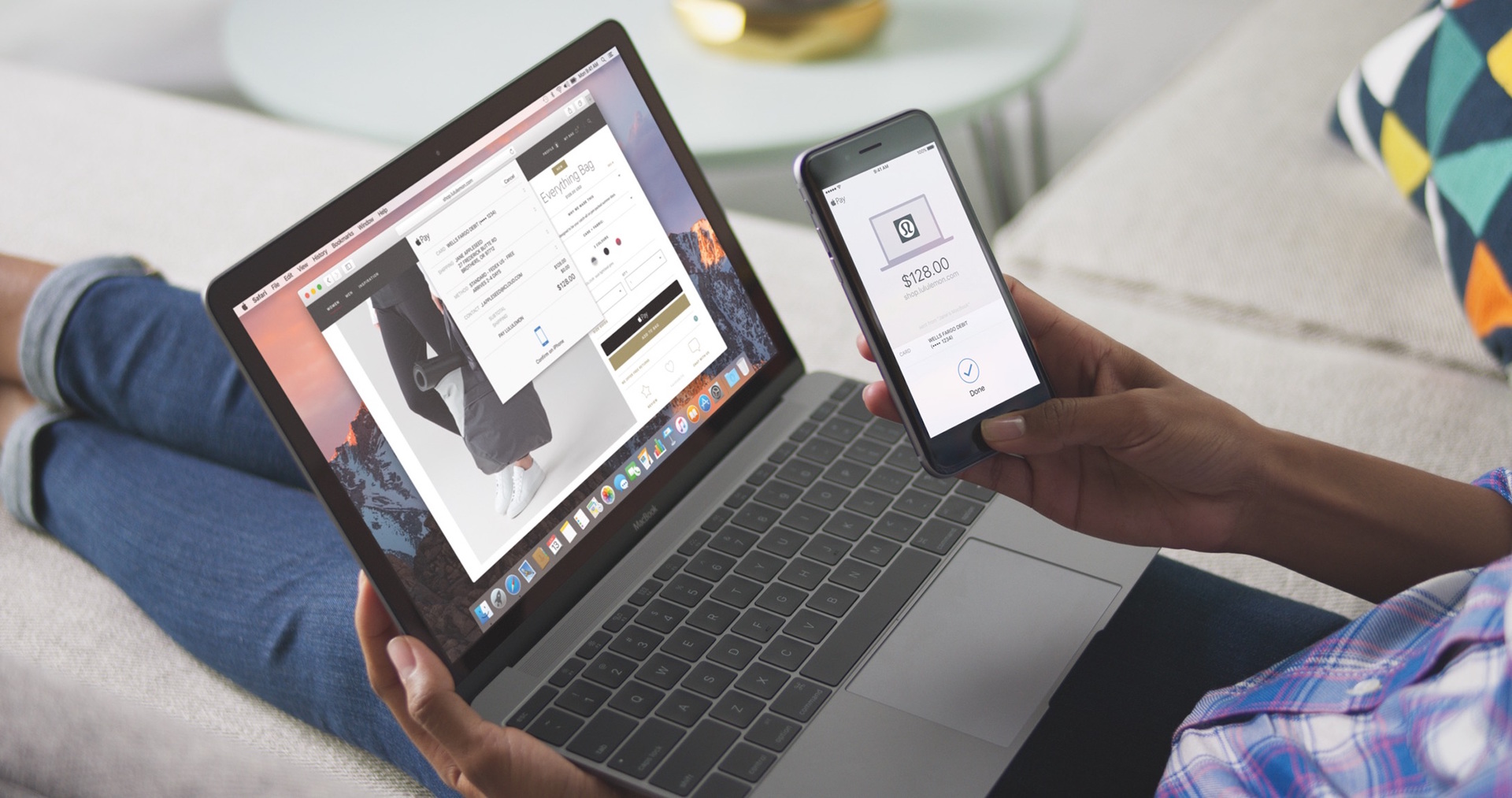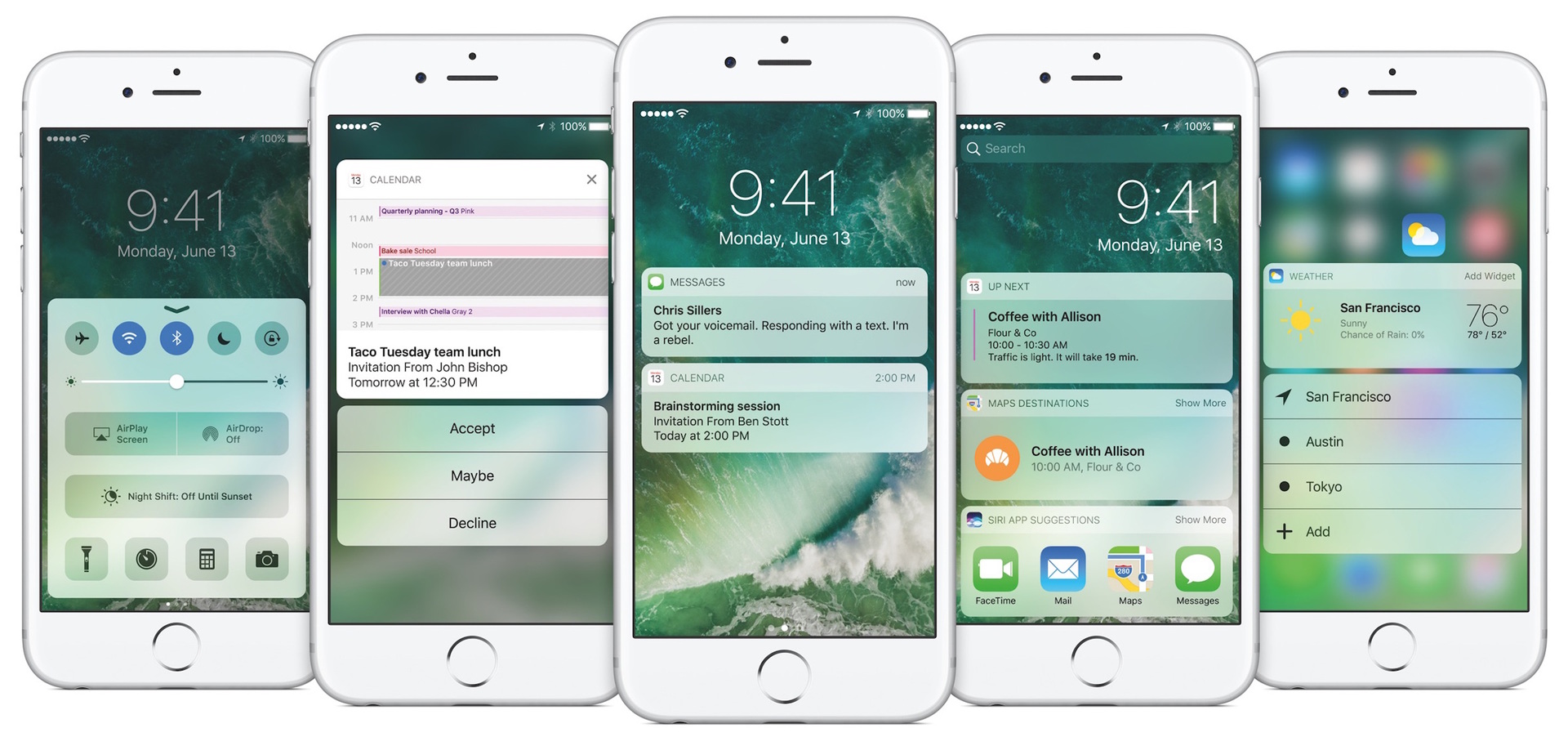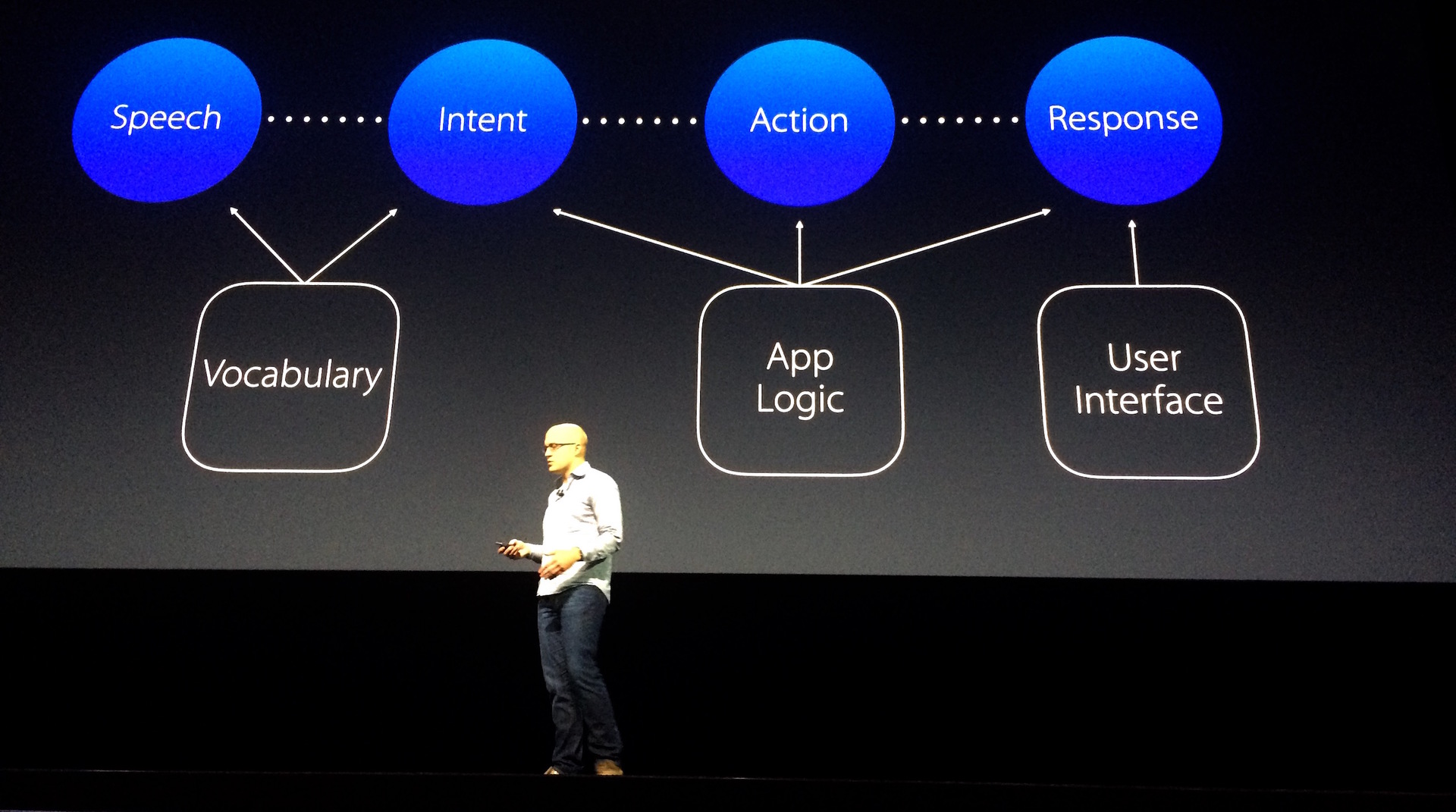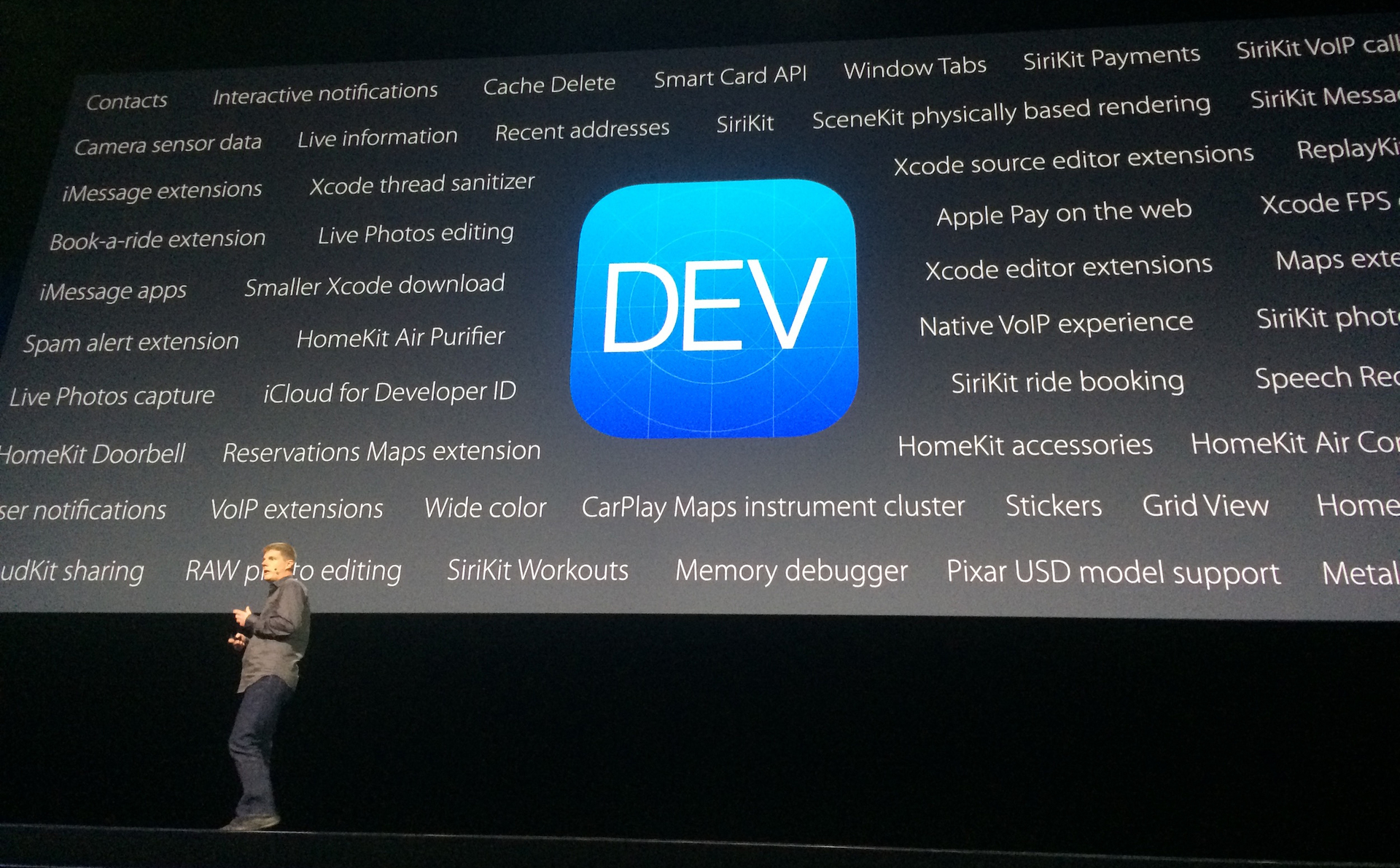WWDC 16: first impressions from the scene
A month ago, I passed Google I / O, where the most interesting announcements related to data services and smart systems. Now is the time for Apple: let's see what innovations the company, which does not accept compromises, has prepared for consumers and developers. Keynote did not take place at the Moscone Center, as usual, but as much at the Bill Graham Auditorium, a historic building in the middle of the San Francisco Civic Center. Usually, consumer innovations of the company will be presented here, but this time they called for developers. As always, the first place in the queue should be taken a day, and two hours before the presentation, you can get up somewhere in the middle of a crowd of 5,000 developers.

In this report, I ( mc_murphy ) gathered information from two presentations: Keynote and Platform State of the Union, to tell about all the announcements of the first day.
Perhaps the least of all the updates in tvOS, in fact, the platform simply repaired what irritated users from the very beginning:
')

The corporation does not know what to do with the clock, but it did a lot of work on the bugs.
OS X renamed to macOS. This is not to say that it was a secret, and the full name is macOS Sierra. If the movement in the mobile sector is nose-to-nose, the desktop macOS is now ahead of the rest. This can be said about usability, and about design, and about integration with wearable devices.


The largest number of updates, traditionally, in iOS. It can be seen that here the most intense struggle for the client leads to useful improvements and curious services.


For developers, there is still a lot of news on Swift, tools and Xcode, new frameworks, etc. Apple developed its AFS file system, completely reworked the application signing system (it was a pain!), Made a simulator for developing applications in iMessage, tried to bring Swift Package Manager to the mind and much more.
But most of the facts are to be learned this week.

In this report, I ( mc_murphy ) gathered information from two presentations: Keynote and Platform State of the Union, to tell about all the announcements of the first day.
tvOS
Perhaps the least of all the updates in tvOS, in fact, the platform simply repaired what irritated users from the very beginning:
- Finally, we added Single Sign-On for applications, so that you don’t need to constantly log in to the browser on the desktop or enter passwords
- The interface can be activated night mode
- Applications purchased in the AppStore on other devices will be automatically downloaded to AppleTV
- Siri will learn to search within some applications, for example, YouTube
- The changes will affect games where you can connect up to 4 external controllers and require their presence.
- Remote application on the iPhone promise to bring to mind and repeat the interface of the native controller Siri Remote
- From the set-top box, you can control smart home devices connected via HomeKit, and the piece of hardware itself will serve as a hub for iPhone and iPad while the user is outside the home network.
')
watchOS
The corporation does not know what to do with the clock, but it did a lot of work on the bugs.
- Applications will finally run instantly. Of course, this applies to those services that the system has identified as prioritized and prepared in advance, but the speed is impressive - especially compared to the 5–10 second launch on watchOS 2.
- The button on the side will now show not a meaningless circle with friends, to whom you can send your heartbeat, but a full-fledged Dock with apps similar to the story in iOS. The system will keep all these applications in a “hot” state, and the screenshots will always provide relevant information. The same will be the replacement of Glances, which with their speed and outdated data just annoyed.
- But instead of Glances there will be only the Control Center, everything is like in an iPhone
- Scribble lettering mode will now be available for text entry, reminiscent of the failure of Apple Newton (1993). The idea is clearly not new, and the implementation looks doubtful. But there is nothing to do, it is not always the same to say in the hours for a set of SMS.
- Apple took seriously wheelchair users and added hand movement recognition while moving in a chair. Now it will all be in Activity.
- Well, the number 1 for meaninglessness - the application Breathe. Helps to practice breathing meditation. That's really what is past the box office, so it is to talk about this at a conference for developers.
macOS
OS X renamed to macOS. This is not to say that it was a secret, and the full name is macOS Sierra. If the movement in the mobile sector is nose-to-nose, the desktop macOS is now ahead of the rest. This can be said about usability, and about design, and about integration with wearable devices.

- Everything continues the theme with Continuity: now the Mac will automatically be unlocked if the user comes up with an iPhone or Apple Watch.
- Clipboard will work between all devices. It looks especially cool with copying images.
- iCloud Drive will now work for all applications, not just those signed from the Mac appstore.
- Since an increasing number of users are paying for cloud storage, Apple came up with Optimize Storage mode - this is when the system decides what to put in iCloud and what is stored on the disk. Frees up the place pretty well.
- ApplePay is now fully included in macOS. You can pay for purchases on the Internet, and transactions through Siri. And security provides TouchID on the near iPhone or the presence of AppleWatch.
- In macOS system tabs have appeared. They promise that they will work in general in all applications, not only from Apple itself, but also from third-party developers. If NSDocument was used, then even adaptation is not required.
- For the video will be available Picture-in-Picture, as on the iPad
- And, of course, the main news is Siri on poppy. Can do the same as on iOS, and even work with files and documents: search for them, filter, and so on.
iOS 10

The largest number of updates, traditionally, in iOS. It can be seen that here the most intense struggle for the client leads to useful improvements and curious services.

- For the first time since the announcement of iOS7, something has apparently changed in the interface. Now, notifications look and work in an adult way, support interface components of third-party applications. The lock screen and the toolbar have been updated, and system applications can be removed and reinstalled from the app.
- Siri is now open to developers, you can order the Uber voice command. Unfortunately, there is not a lot of information yet, but, apparently, there will be no magic - this thing works only for pre-trained domains (ordering services, sending messages, fitness, etc.), and it can be customized only within very narrow limits. In general, a full-fledged machine learning AI will not be available to us, the developers only set the dictionary and provide their own visual interface.
- There are growing concerns that Apple will miss the “next revolution” in machine learning and artificial intelligence. Unlike Google, they often rely on hardware and usability. However, this time some of the news looks pretty modern: Siri is now built into the keyboard and knows how to give smart hints, analyze applications and give contextual actions - in general, it behaves almost like Google Now.
- Photos app now does the same as Google Photos. Recognizes scenes, faces and objects. Lag about a year.
- Now you can add your own components to the system map application: for example, ordering a taxi, flowers and anything. This is done using the already familiar NSUserActivity and AppExtensions, as well as in Spotlight, Siri, and many other places in iOS 10.
- My favorite feature is the ability to VoIP applications (Skype, Viber, etc.) to integrate into the system dialing dialogs, contacts, call history, etc. As the messengers replaced SMS in due time, so VoIP will replace voice calls through telecom operators.
- Apple could not resist and also stuffed a lot of everything into its iMessage. I will not tell you in detail, but stickers, animations and full-screen effects, emoji and auto-replacement for emoji, formatting and pre-opening links appeared. But most importantly - the ability to embed your applications. Yes, through Extensions. For example, it will be possible to send money in a chat or jointly choose a restaurant. All this looks much better and more mature than Facebook Messenger or Telegram, as it is done completely natively. And here lies the main disadvantage: on Android, this was never announced. This is, of course, a sentence.

Developer Tools & Frameworks
For developers, there is still a lot of news on Swift, tools and Xcode, new frameworks, etc. Apple developed its AFS file system, completely reworked the application signing system (it was a pain!), Made a simulator for developing applications in iMessage, tried to bring Swift Package Manager to the mind and much more.
But most of the facts are to be learned this week.

Source: https://habr.com/ru/post/303232/
All Articles